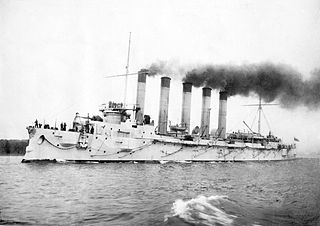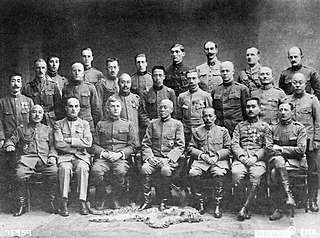
Primorsky Krai, informally known as Primorye, is a federal subject of Russia, located in the Far East region of the country and is a part of the Far Eastern Federal District. The city of Vladivostok on the southern coast of the krai is its administrative center, and is one of the two largest cities in the Russian Far East together with Khabarovsk. The krai has the largest economy among the federal subjects in the Russian Far East, and a population of 1,845,165 as of the 2021 Census.

Hyundai Glovis Co., Ltd. is a logistics company headquartered in Seoul, South Korea and part of the Hyundai Motor Group. Its predecessor company, Hankook Logitech Co. Ltd was formed in February 2001. Hyundai Glovis supplies ocean transportation logistics advice, cargo space, loading/unloading, and packaging services. It changed its name to Hyundai Glovis in June 2003.

JSC Vladivostok Air was an independent airline with its head office at the airport in Artyom, Primorski Krai, Russia. In 2011, it was reacquired by Aeroflot.

The Battle of the Yellow Sea was a major naval battle of the Russo-Japanese War, fought on 10 August 1904. In the Russian Navy, it was referred to as the Battle of 10 August. The battle foiled an attempt by the Russian fleet at Port Arthur to break out and form up with the Vladivostok squadron, forcing them to return to port. Four days later, the Battle off Ulsan similarly ended the Vladivostok group's sortie, forcing both fleets to remain at anchor.

The naval Battle of Ulsan, also known as the Battle of the Japanese Sea or Battle of the Korean Strait, took place on 14 August 1904 between cruiser squadrons of the Imperial Russian Navy and the Imperial Japanese Navy during the Russo-Japanese War, four days after the Battle of the Yellow Sea.

UTC+10:00 is an identifier for a time offset from UTC of +10:00. This time is used in:

The area that is now Vladivostok was ruled by various states, including the Mohe, the Goguryeo, the Balhae and the later Liao, Jīn and Ming dynasties. The land was ceded by China to Russia as a result of the Treaty of Aigun of 1858 and the Treaty of Peking of 1860.

The Far Eastern economic region is one of twelve economic regions of Russia.

Askold was a protected cruiser built for the Imperial Russian Navy. She was named after the legendary Varangian Askold. Her thin, narrow hull and maximum speed of 23.8 knots (44.1 km/h) were considered impressive for the time.

Gromoboi was an armoured cruiser built for the Imperial Russian Navy in the late 1890s. She was designed as a long-range commerce raider and served as such during the Russo-Japanese War of 1904–05. When the war broke out, she was based in Vladivostok and made several sorties in search of Japanese shipping in the conflict's early months without much success.

The Siberian intervention or Siberian expedition of 1918–1922 was the dispatch of troops of the Entente powers to the Russian Maritime Provinces as part of a larger effort by the western powers, Japan, and China to support White Russian forces and the Czechoslovak Legion against Soviet Russia and its allies during the Russian Civil War. The Imperial Japanese Army continued to occupy Siberia even after other Allied forces withdrew in 1920.

Zolotoy Rog or the Golden Horn Bay, is a sheltered horn-shaped bay of the Sea of Japan, located in coastal Primorsky Krai within the Russian Far East. Vladivostok, which lies on the hills at the head of the bay, is a major city and Russian port on the Pacific.
The Yakut revolt or the Yakut expedition was the last episode and final set of military engagements of the Russian Civil War. The hostilities took place between September 1921 and June 1923 and were centered on the Ayano-Maysky District of the Russian Far East.

SS Stalingrad was a steamship of the Soviet Union, named after the Soviet city of Stalingrad, itself named after Joseph Stalin. She was built at Soviet Shipyard No. 189 (Ordzhonikidze) in Leningrad and operated by Chief Directorate of the Northern Sea Route (GUSMP), who homeported her in Vladivostok. She had entered service in 1933.
FESCO Transportation Group is an intermodal transport operator in Russia, which provides services, including marine shipping, Roll-on/roll-off, rail transportation and port handling. The parent company of the Group is Far-Eastern Shipping Company JSC. FESCO Group is headquartered in Moscow.

The Japanese Siberian Intervention of 1918–1922 was a dispatch of Japanese military forces to the Russian Maritime Provinces, as part of a larger effort by western powers and Japan to support White Russian forces against the Bolshevik Red Army during the Russian Civil War. The Japanese suffered 1,399 killed and another 1,717 deaths from disease. Japanese military forces occupied Russian cities and towns in the province of Primorsky Krai from 1918—1922.

Vladivostok is the largest city and the administrative center of Primorsky Krai, in the far east of Russia. It is located around the Golden Horn Bay on the Sea of Japan, covering an area of 331.16 square kilometers, with a population of 600,871 residents as of 2021. Vladivostok is the second-largest city in the Far Eastern Federal District, as well as the Russian Far East, after Khabarovsk. It is located approximately 45 kilometers (28 mi) from the China–Russia border and 134 kilometers (83 mi) from the North Korea-Russia border.

Hockey Club Admiral, Also Known as The Admiral Vladivostok, are a professional ice hockey team based in Vladivostok, Primorsky Krai, Russia. They are members of the Chernyshev Division of the Eastern Conference of the Kontinental Hockey League (KHL). Admiral play their home games at Fetisov Arena, which has a capacity of 7,500.
The Free port of Vladivostok is a special investment regime in the Russian Far East. Since its establishment in 2015, the government has assured that the Free Port would create a distinctive economic zone, attracting foreign investments, facilitating technology transfer, and fostering international expertise, all while promoting grassroots entrepreneurialism.

The Seishin Operation, also called Chongjin Landing Operation, was an amphibious assault on northern Korea between 13–17 August 1945, carried out by the forces of the Soviet Northern Pacific Flotilla of the Pacific Fleet during the Soviet–Japanese War at the end of World War II.

















